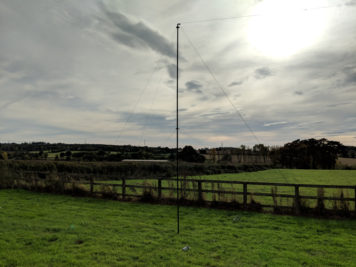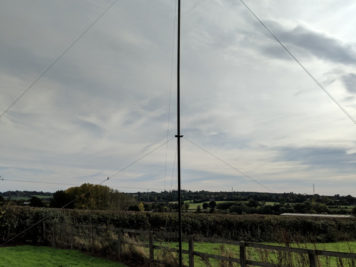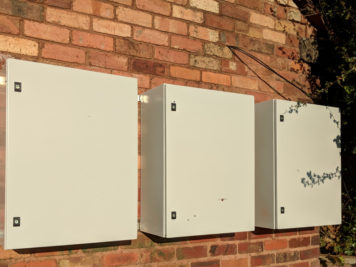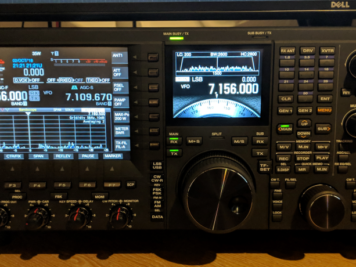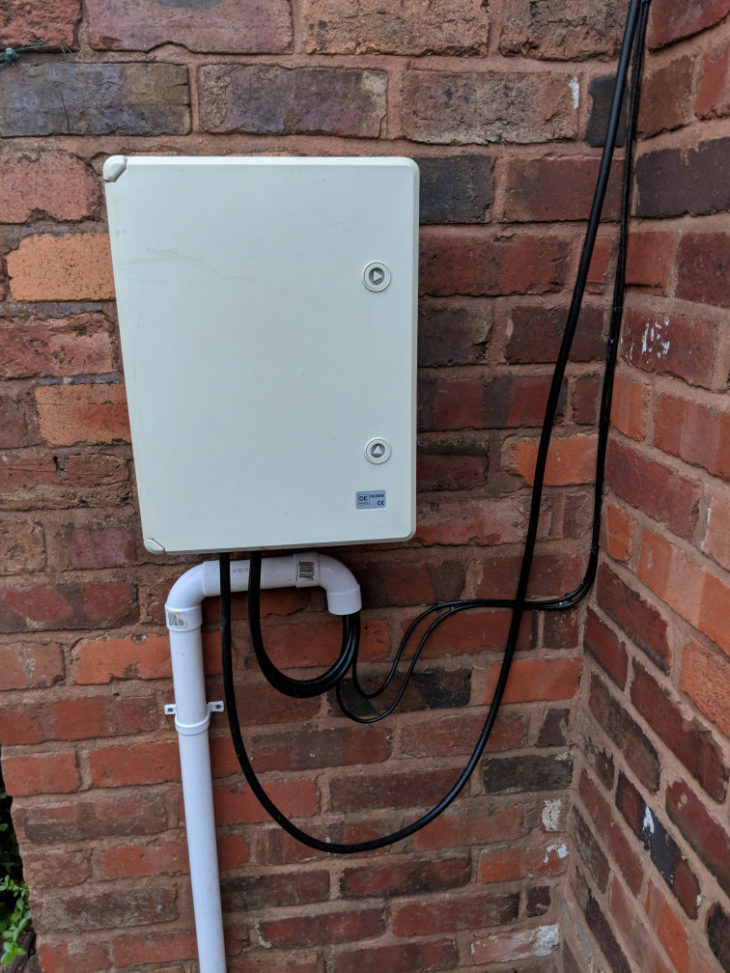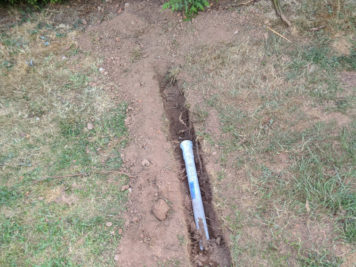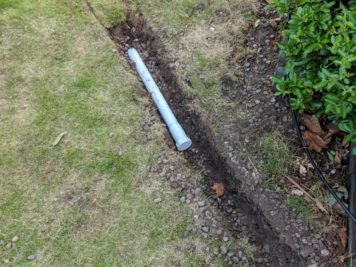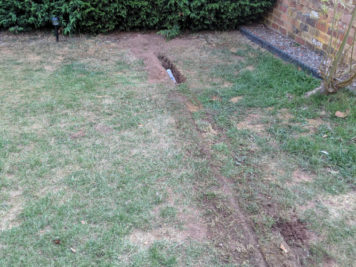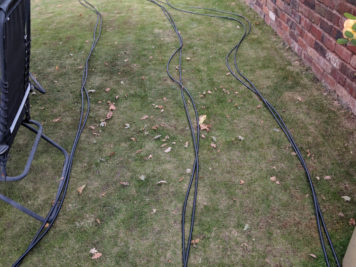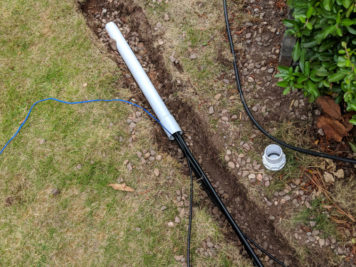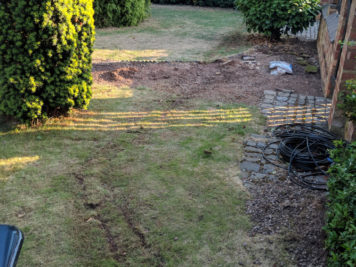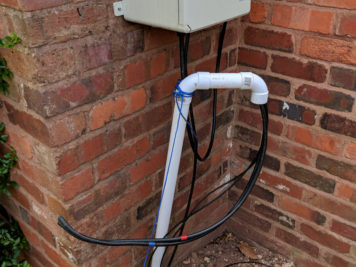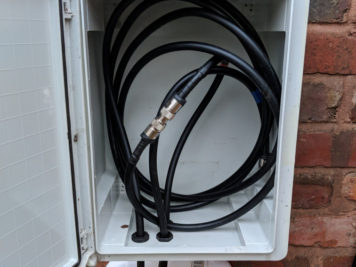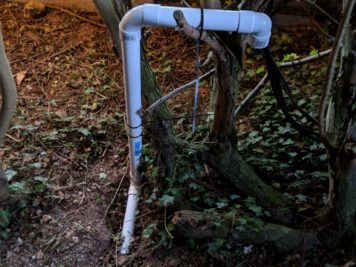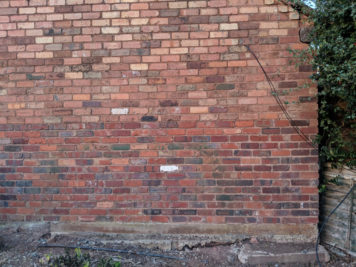After having been off air for a number of years due to an impending house move, I finally moved to my new location last summer. The house is very much a project house so most of last year was spent working on the property. This year however I decided it was time to begin getting my station built and getting back on air.
The new property has an excellent section of land which is ideal for antennas however given that the shack is in an upstairs bedroom getting coax and control lines to it would be a challenge, especially as i’d have to get these through the garden without upsetting the XYL too much.
I decided the best approach was to bury the cabling under the garden. I chose to use Messi & Paoloni BROAD-PRO 50 Double Jacket coax, it provides excellent performance at a fairly reasonable price and with the double jacket can be direct buried if needed.
Despite having the option to direct bury the coax, I decided to use conduit, this would allow me to run some additional cabling and in the event any of the cabling needed replacing, I could do so without having to dig another trench. I used 40mm waste pipe as the conduit, it’s pretty cheap and works nicely for this application, the conduit was laid on a bed of sand to help protect it from any stones or rocks. It was only buried about 8-10 inches from the surface.
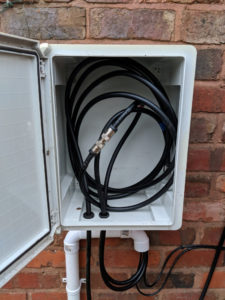
Feeding the coax through the conduit was a challenge as I had a few bends, I first ran a string line through using a shop vac to suck the line from the other end (this was surprisingly effective), however feeding the cable through 20 meters of conduit was quite a struggle.
I ended up with 2 runs of coax and 2 runs of externally rated CAT6 cable (all antenna switching control, tuning control etc. will be done over ethernet). I installed an intermediate junction box before the cabling entered the conduit, this will allow me to add additional switching and/or replace any damaged coax without the need to remove the runs that go all the way to the shack.
The cabling exits close to where the antennas will be located and will eventially be terminated in a large IP65 wall cabinet which will house all the antenna switching gear and matching systems, however for now I have them hooked directly into a DX Commander multi band vertical that my good friend Callum M0MCX kindly donated (http://www.m0mcx.co.uk).
I’m very happy with how it all turned out and the trench is now barely visible in the garden.

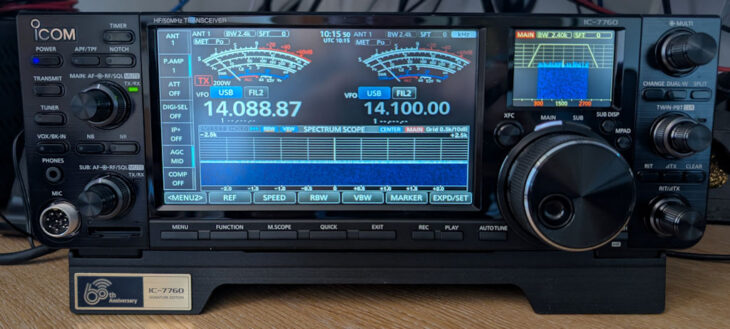
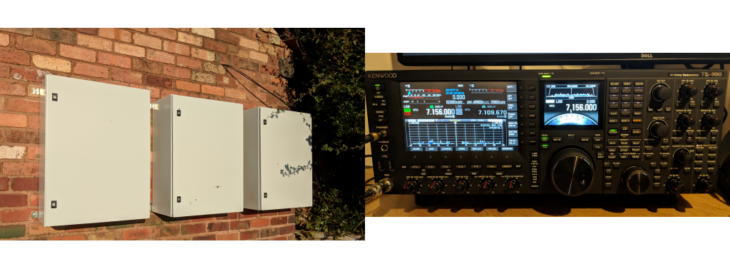
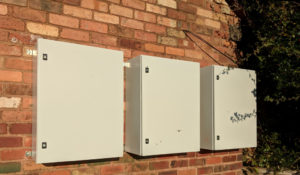 The last few weeks have seen some good progress on getting the new station built, the external cabinets have now been installed, these are Schneider Electric Spacial CRN cabinets and measure 600mm x 800mm x 300mm. From left to right they’ll be used for 240v Mains Electric, control equipment (more on this in a future posting) and RF Switching. These are great cabinets as they’re relativly inexpensive and are IP66 rated so provide good weather proofing for the equipment. My location is very exposed to the weather so this is an important consideration.
The last few weeks have seen some good progress on getting the new station built, the external cabinets have now been installed, these are Schneider Electric Spacial CRN cabinets and measure 600mm x 800mm x 300mm. From left to right they’ll be used for 240v Mains Electric, control equipment (more on this in a future posting) and RF Switching. These are great cabinets as they’re relativly inexpensive and are IP66 rated so provide good weather proofing for the equipment. My location is very exposed to the weather so this is an important consideration.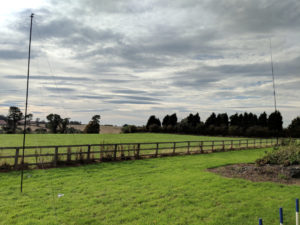 With CQWW SSB coming up I wanted to be able to get on 80m, so figured it was time to convert the DX Commander into an 80m capable antenna. The 17m element was removed and replaced with an 80m inverted L element, with hindsight I should probably have removed the 30m element but i’ll address this once I move the DX Commander to it’s permanent location. The end of the inverted L is supported from a Clansman 5.4m Mast i’ve had laying around for years. The 80m performance seems to be pretty good and will certainly do as a temporary solution for 80m.
With CQWW SSB coming up I wanted to be able to get on 80m, so figured it was time to convert the DX Commander into an 80m capable antenna. The 17m element was removed and replaced with an 80m inverted L element, with hindsight I should probably have removed the 30m element but i’ll address this once I move the DX Commander to it’s permanent location. The end of the inverted L is supported from a Clansman 5.4m Mast i’ve had laying around for years. The 80m performance seems to be pretty good and will certainly do as a temporary solution for 80m.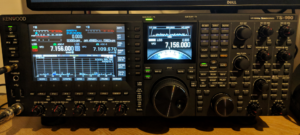 Finally, and perhaps the most exciting change is the new HF rig, i’ve had my trusty Yaesu FT-2000 for a very long time and the opportunity came up for me to acquire a Kenwood TS-990S. The descision was a very easy one so the FT-2000 had to go. I’ve only had the TS-990S for a short time but so far i’m very pleased with it. The performance is considerably better than the FT-2000 and it’s a fantastic rig to operate. I’m very much looking forward to putting it through it’s paces in CQWW SSB.
Finally, and perhaps the most exciting change is the new HF rig, i’ve had my trusty Yaesu FT-2000 for a very long time and the opportunity came up for me to acquire a Kenwood TS-990S. The descision was a very easy one so the FT-2000 had to go. I’ve only had the TS-990S for a short time but so far i’m very pleased with it. The performance is considerably better than the FT-2000 and it’s a fantastic rig to operate. I’m very much looking forward to putting it through it’s paces in CQWW SSB.
